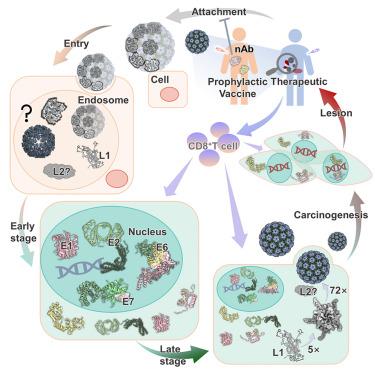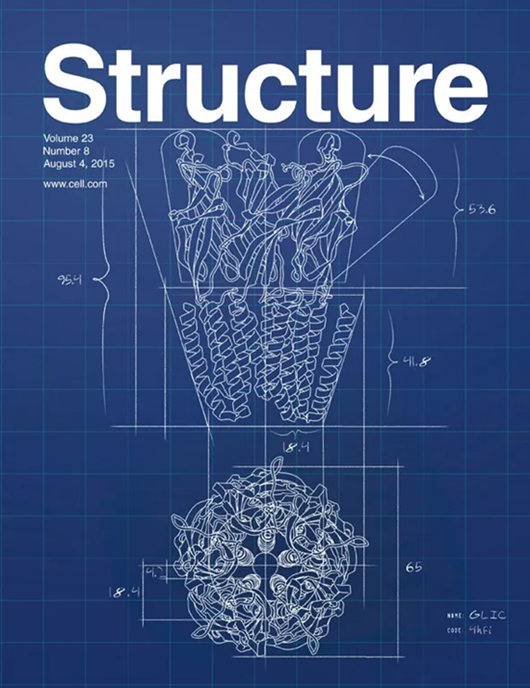Structural biology of the human papillomavirus
IF 4.4
2区 生物学
Q2 BIOCHEMISTRY & MOLECULAR BIOLOGY
引用次数: 0
Abstract
Human papillomavirus (HPV), known for its oncogenic properties, is the primary cause of cervical cancer and significantly contributes to mortality rates. It also plays a considerable role in the globally rising incidences of head and neck cancers. These cancers pose a substantial health burden worldwide. Current limitations in diagnostic and treatment strategies, along with inadequate coverage of preventive vaccines in low- and middle-income countries, hinder the progress toward the World Health Organization (WHO) HPV prevention and control targets set for 2030. In response to these challenges, extensive research in structural virology has explored the properties of HPV proteins, yielding crucial insights into the mechanisms of HPV infection that are important for the development of prevention and therapeutic strategies. This review highlights recent advances in understanding the structures of HPV proteins and discusses achievements and future opportunities for HPV vaccine development.

人类乳头瘤病毒的结构生物学
人类乳头状瘤病毒(HPV)以其致癌特性而闻名,是宫颈癌的主要病因,也是导致宫颈癌死亡率的重要因素。它还在全球头颈部癌症发病率的上升中扮演着重要角色。这些癌症在全球范围内造成了巨大的健康负担。目前诊断和治疗策略的局限性,以及预防性疫苗在中低收入国家的覆盖率不足,阻碍了世界卫生组织(WHO)设定的 2030 年人类乳头瘤病毒预防和控制目标的实现。为了应对这些挑战,结构病毒学的大量研究探索了 HPV 蛋白的特性,对 HPV 感染机制有了重要的认识,这对制定预防和治疗策略非常重要。本综述重点介绍了在了解 HPV 蛋白结构方面取得的最新进展,并讨论了 HPV 疫苗开发所取得的成就和未来的机遇。
本文章由计算机程序翻译,如有差异,请以英文原文为准。
求助全文
约1分钟内获得全文
求助全文
来源期刊

Structure
生物-生化与分子生物学
CiteScore
8.90
自引率
1.80%
发文量
155
审稿时长
3-8 weeks
期刊介绍:
Structure aims to publish papers of exceptional interest in the field of structural biology. The journal strives to be essential reading for structural biologists, as well as biologists and biochemists that are interested in macromolecular structure and function. Structure strongly encourages the submission of manuscripts that present structural and molecular insights into biological function and mechanism. Other reports that address fundamental questions in structural biology, such as structure-based examinations of protein evolution, folding, and/or design, will also be considered. We will consider the application of any method, experimental or computational, at high or low resolution, to conduct structural investigations, as long as the method is appropriate for the biological, functional, and mechanistic question(s) being addressed. Likewise, reports describing single-molecule analysis of biological mechanisms are welcome.
In general, the editors encourage submission of experimental structural studies that are enriched by an analysis of structure-activity relationships and will not consider studies that solely report structural information unless the structure or analysis is of exceptional and broad interest. Studies reporting only homology models, de novo models, or molecular dynamics simulations are also discouraged unless the models are informed by or validated by novel experimental data; rationalization of a large body of existing experimental evidence and making testable predictions based on a model or simulation is often not considered sufficient.
 求助内容:
求助内容: 应助结果提醒方式:
应助结果提醒方式:


